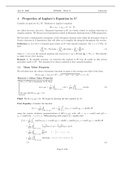Class notes
Summaries of all lecture notes in APM346, you will be good to go if you are able to understand everything shown in the notes
- Course
- Institution
Summaries of all lecture notes in APM346, you will be good to go if you are able to understand everything shown in the notes
[Show more]



